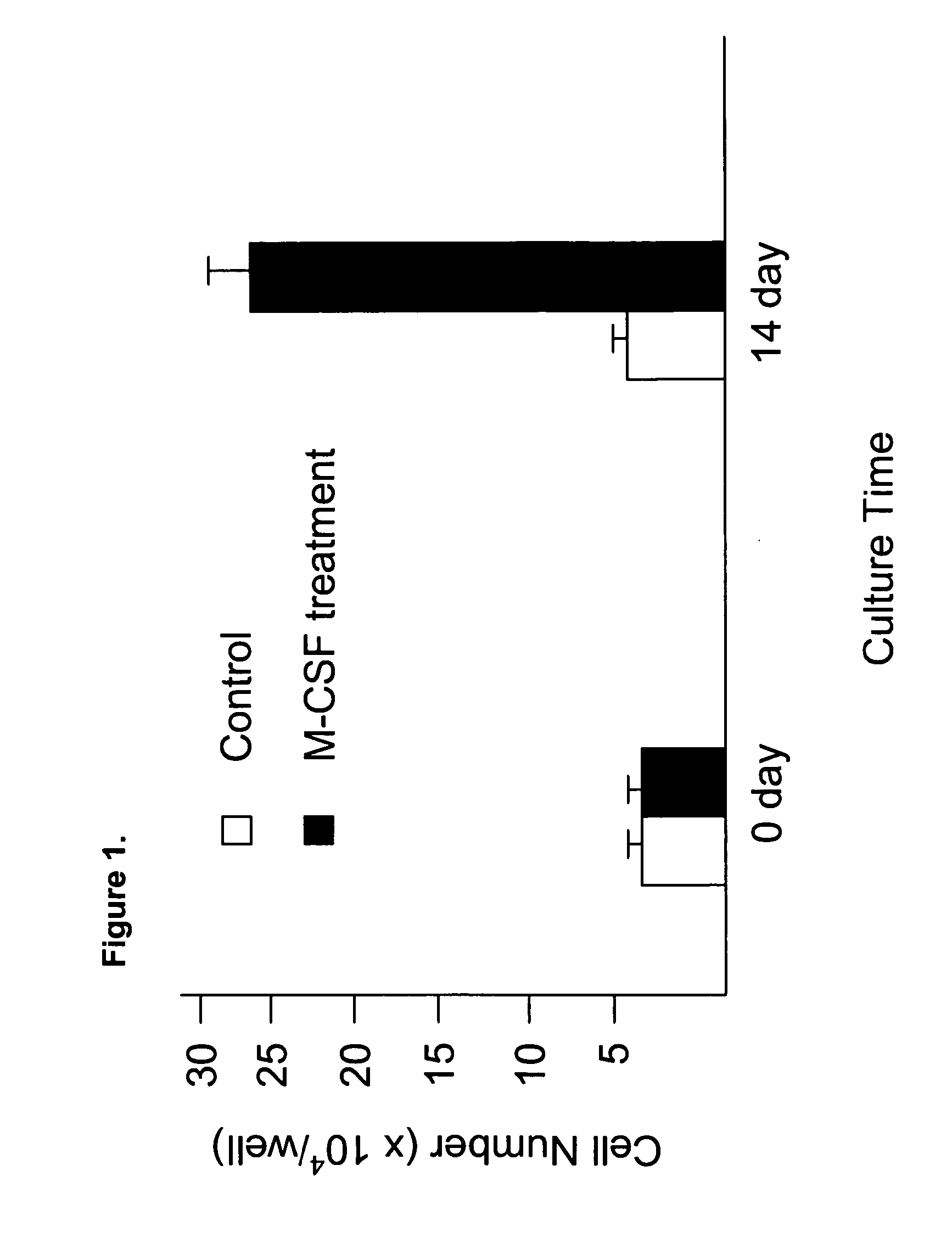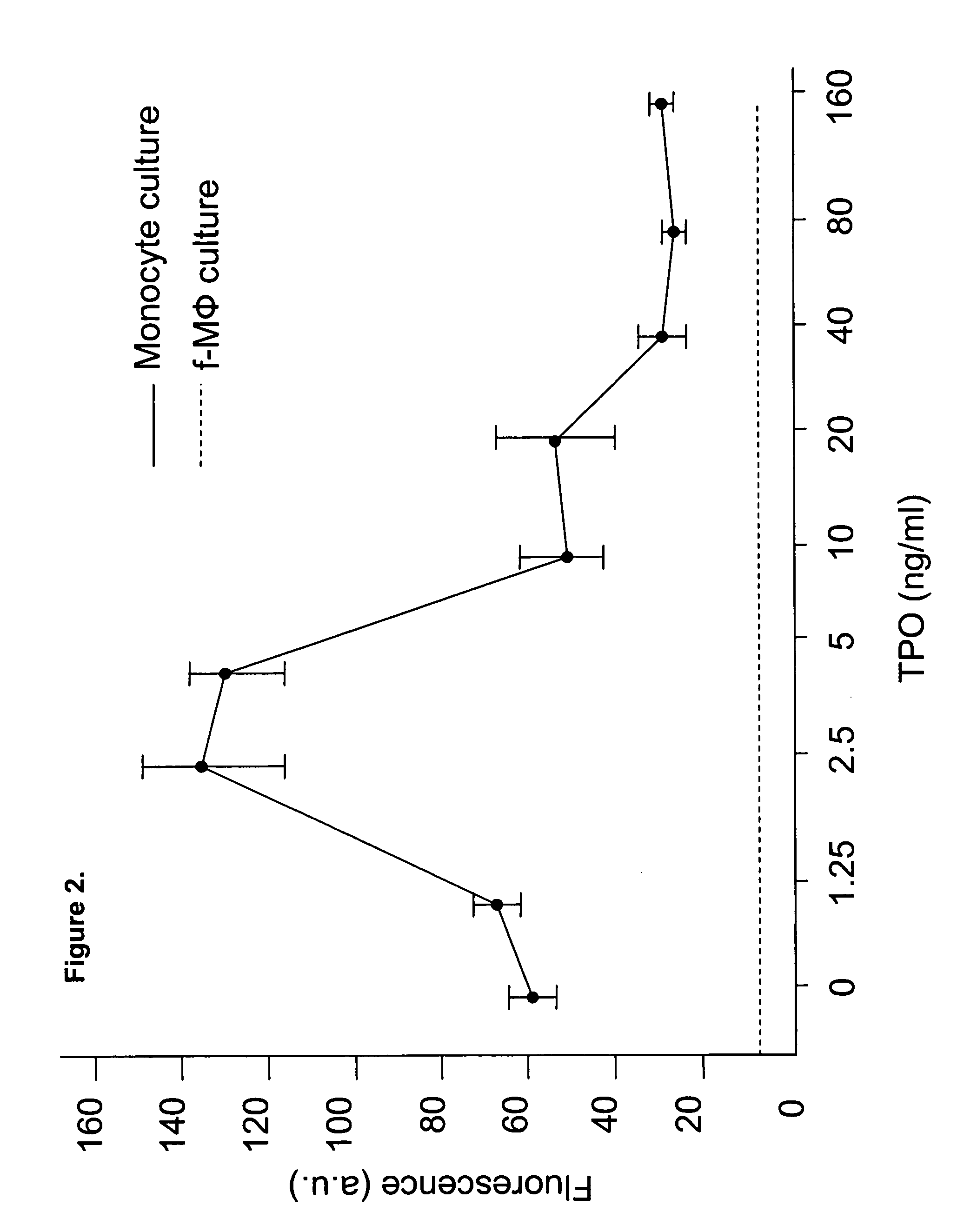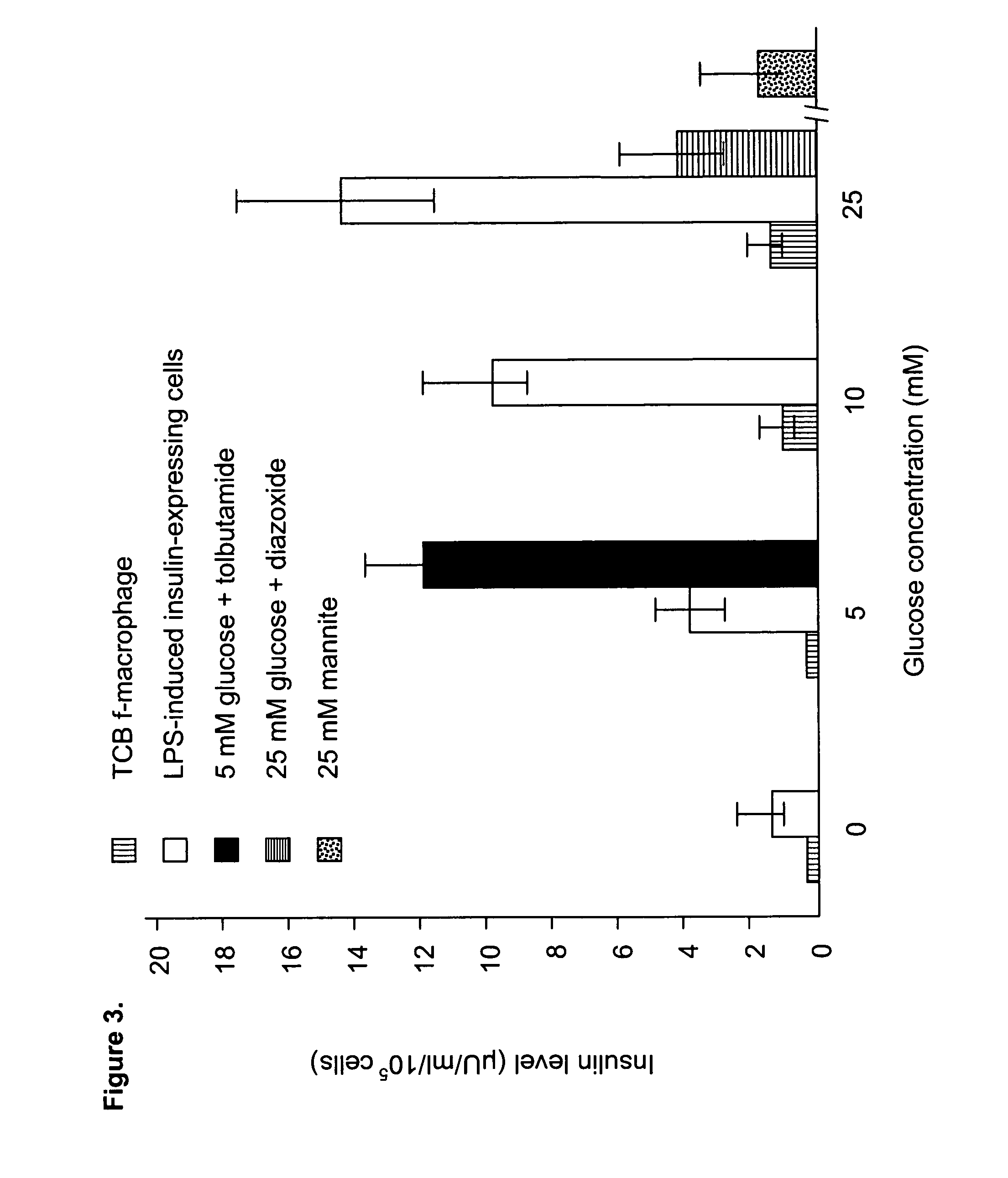Human umbilical cord blood-derived pluripotent fibroblast-like-macrophages
- Summary
- Abstract
- Description
- Claims
- Application Information
AI Technical Summary
Benefits of technology
Problems solved by technology
Method used
Image
Examples
example 1
Generation of f-MΦ from Human Umbilical Cord Blood
[0070] Human umbilical cord blood-derived monocytes were treated with 50 ng / ml M-CSF for 10-14 days. After this treatment, approximately 80-90% of the cells were elongated. To confirm they were f-MΦ, cell markers were evaluated. Immunostaining demonstrated that these cells expressed specific macrophage marker CD14, leukocyte common antigen CD45, and hematopoietic stem cell markers CD34 and CD117. Cord blood derived monocytes were treated with 50 ng / ml M-CSF for 14 days and then used for staining. Cells express the f-MΦ surface markers including CD14, CD45, CD34, and CD117.
[0071] Double staining showed that these cells co-expressed macrophage functional markers, such as scavenger receptor CD163 and phagocytosis, demonstrated by phagocytosis of Dextran 10,000. Merged imaging showed the colocalization of double staining (yellow), wherein cells display the functional markers phagocytosis (red) and scavenger receptor CD163 (green). Phag...
example 2
Thrombopoietin (TPO) Stimulates the Proliferation of Human Cord Blood-Derived f-Macrophages (CB f-MΦ)
[0073] TPO modulates multiple aspects of hematopoiesis, including stem cell survival, self-renewal and expansion. Different dosages of TPO were evaluated for effects on CB f-MΦ. The results showed that TPO possessed dual effects on the proliferation of the CB f-MΦ. See FIG. 2. At lower dosage (2.5-5 ng / ml), TPO significantly increased cell number (FIG. 2), to a level that was about 2 times more than the TPO-untreated CB f-MΦ, and 10 times higher than the control monocytes. However, at higher dosage (>40 ng / ml), TPO inhibited the proliferation of CB f-MΦ. Low dose (5 ng / ml) TPO was further evaluated to increase the CB f-MΦ number in additional experiments.
example 3
TPO-Expanded CB f-MΦ (TCB f-MΦ) Retain Phenotypic Characteristics of f-MΦ
[0074] Retention of the original phenotype is a major concern after expanding stem cell cultures. Using 5 ng / ml TPO, CB f-MΦ could be passaged 5-8 times in RPMI 1640 medium supplemented with 3.5% FBS. After continuing culture for 2 months, immunostaining showed that TPO-stimulated cells continued to express leukocyte common antigen CD45, macrophage markers CD 14 and CD 163, and stem cell marker CD117 at the same level as parental CB f-MΦ. While CD34 expression was decreased to ˜30% of cells. FITC-conjugated secondary antibodies were used for CD45, CD117, and CD163, while FITC-conjugated antibody was used for CD14. Cells were photographed using Zeiss LSM 510 META confocal microscope.
[0075] TPO is also a key inducer for differentiation of platelets and megakaryocytes. To evaluate if such differentiation occurred after expansion of CB f-MΦ with TPO, the 4th and 5th passaged cells were examined with the specific p...
PUM
 Login to View More
Login to View More Abstract
Description
Claims
Application Information
 Login to View More
Login to View More - R&D
- Intellectual Property
- Life Sciences
- Materials
- Tech Scout
- Unparalleled Data Quality
- Higher Quality Content
- 60% Fewer Hallucinations
Browse by: Latest US Patents, China's latest patents, Technical Efficacy Thesaurus, Application Domain, Technology Topic, Popular Technical Reports.
© 2025 PatSnap. All rights reserved.Legal|Privacy policy|Modern Slavery Act Transparency Statement|Sitemap|About US| Contact US: help@patsnap.com



